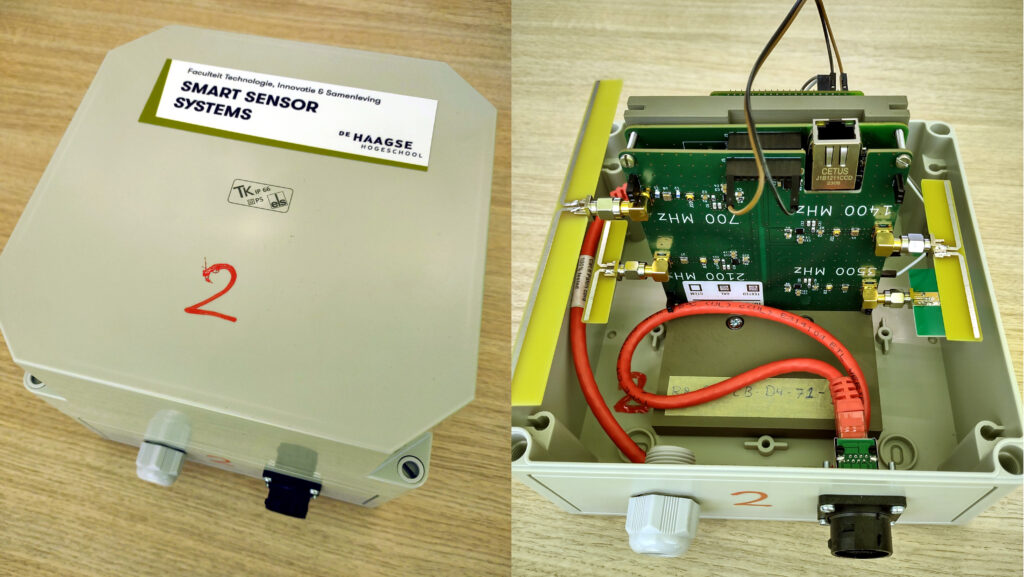In an increasingly digital world, people use wireless networks such as Wi-Fi and 5G every day. But how strong is the radiation they emit, and what impact does it have on the environment? The Smart Sensor Systems research group of The Hague University of Applied Sciences is studying this using the digital infrastructure of the Living Lab Scheveningen.
What is electromagnetic field strength?
Electromagnetic field strength indicates how strong the invisible waves are that are used for wireless communication. These include signals from mobile phones, 5G antennas, and radio transmitters. Such waves fill the air around us and make wireless connectivity possible.


What is the goal of the research?
The research focuses on determining how reliably sensors can perform long-term measurements. It also examines what the normal levels of electromagnetic fields are and how this data can be used to inform residents clearly and accurately about electromagnetic fields in their living environment.
How is this measured on the boulevard?
In the Living Lab Scheveningen, a location where new technologies are tested, sensors have been installed. These sensors form a small network that continuously measures the electromagnetic field strength along the boulevard.
Soon accessible to everyone
An online dashboard will soon be available, allowing anyone to view live measurement results. This will make the invisible signals in the environment visible and easy to understand.
About the Smart Sensor Systems research group
Smart measuring instruments and sensors—static, mobile, and even wearable—provide valuable data and applications for sectors such as business, healthcare, and technology. The Smart Sensor Systems research group focuses on the design and development of these sensor networks, as well as on the processing and communication of measurement data.